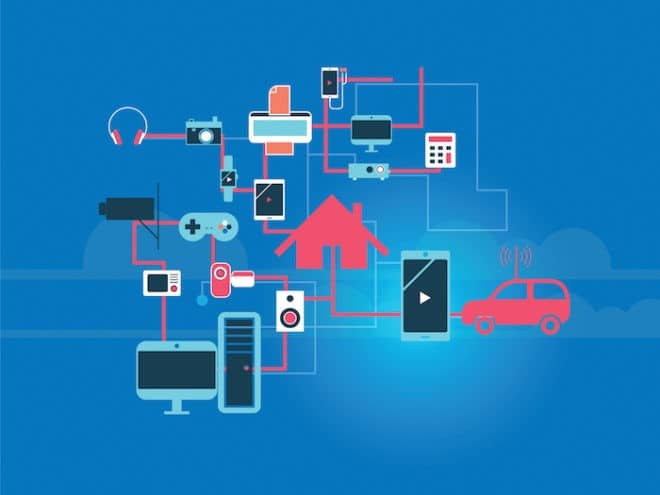Even though there are quick & ready made industry solutions already available in tons, it is important that the solution is designed & customized to your specific needs. A sample decision framework that could help conceptualizing the solution is depicted below [3]:
 Develop Pilot: Before you go for full scale implementation, it is important run a few iteration of pilot to touch critical touch-points of your business and assess the impact. Is user experience of your solution as per articulated vision ? What are the challenges in collecting data, Is hardware product meeting the requirements and fitting well with your business processes ? Any challenges in data acquisition, data processing, data storing or analyzing ? What is the feedback of end users and other stakeholders ? So many such questions needs to be answered during pilot development stage.
Develop Pilot: Before you go for full scale implementation, it is important run a few iteration of pilot to touch critical touch-points of your business and assess the impact. Is user experience of your solution as per articulated vision ? What are the challenges in collecting data, Is hardware product meeting the requirements and fitting well with your business processes ? Any challenges in data acquisition, data processing, data storing or analyzing ? What is the feedback of end users and other stakeholders ? So many such questions needs to be answered during pilot development stage.
Implement the solution: Now it is time to implement the solution. The integrated solution would typically involve multiple discrete and distributed technology solutions. e.g. the product hardware, product embedded software solution, edge computing & device gateway, data acquisition and ingesting components are the back-end, cloud computing services, data storage services, security and authentication services, Mobile application etc. There are several industry grade platforms that are providing standard and customized solutions. It is wise to choose among one of these platform based solution which is best suited for your business. Agile/DevOps based approach would help in quick roll-out of solution and reducing deployment nightmares.
Maintain & Support the solution: As mentioned above, IoT solutions are constantly evolving. New upgrades, new features have to be rolled out on regular basis to customize the solution as per market needs.
Challenges in IoTfying
IoTfying is not an easy task. The implementation journey for your businesses goes through multiple challenges. It is important to be educated about these challenges well in advance and identifying the right mitigation steps to overcome these challenges. These are
1. Security and Data Governance related:
Wireless connections, open apis, security vulnerabilities around connection and configuration, less-educated and limited aware end users, massive liability & legal implications makes companies concerned about security and data governance issues.
In order to face this challenge, it is important to review the security of end-to-end solution at multiple levels and strengthen current IT infrastructures. Also carefully select new hardware and software partners by analyzing their security profiles etc.
2. IT & Business partnership related:
IoT solutions is all about collaborating and partnerships. A solution may involve multiple disjoint partners which could lead to partnerships that are not natural relationships. Haziness about the partnership terms, partnership rights and constraints could be another challenge to discuss and sort out.
3. Data and Analytics complexity:
Data and Analytics solutions have to be designed very carefully. It is experienced a lot of implementations are collecting vast amount of data and sensors are just sending the data directly to cloud. Collecting vast amount of unnecessary data and transferring every bit to cloud is likely to impose massive challenges like bandwidth requirements, optimized usage of battery power, latency issues for critical applications, data storage, and legal issues around data ownership. Designing the solution should be based on the principles of collecting minimum needed set of data, and should also make use of available edge computing/fog computing capabilities so that lot of analysis can be done locally.
4. Lack of Standards
Absence of available standards/ presence of multiple standards at every level is likely to pose huge challenges going forward. IoT is not able standalone devices or standalone organization. The devices will be required to talk to other devices & things. These devices may follow completely different standard. This will pose integration challenges for inter-working of devices.
5. Highly fragmented market of niche solution
IoT devices have widely varying requirements of power, data processing, form factor, and other factors. Some of these devices are expected to run on battery power for months or years together without any need to replace battery. Some solutions may be ok with low bandwidth requirements whereas others may need very high bandwidth. IoT solution for industry devices may require direct connection to power supply and may have very high bandwidth requirements. On the software side, there are plethora of software solutions offering niche services. Integrating all these solutions sometimes becomes very challenging
6. Realizing the value (RoI)
As the technology and its business implementation is still evolving, a lot of times it becomes challenging to articulate clear use cases and quantitative analysis of return on investments. Vague value statements and unrealistic expectation of RoI may lead to management frustration and abandoning half baked solution. It is important to build proof of concepts to test the waters with well thought of business cases that are customer centric and not technology centric.
In summary, IoT is leading industry towards a amazing, highly productive state of the art business solutions – Solutions with potential to offer path breaking benefits and flip the business model upside down. The need is to rightly approach the solution across whole cycle from strategies, conceptualizing, implementing and maintaining.
Anil Kumar Gupta is an industry veteran in software & technology, consultant for advanced technologies – Internet of Things, connected car, machine learning, big data etc.
References:
[1] http://www.em-visual.com/2015/06/servicemax-internet-of-things-infographic/
[2] https://5g.co.uk/guides/5g-and-the-connected-car/
[3] http://techproductmanagement.com/iot-decision-framework/












